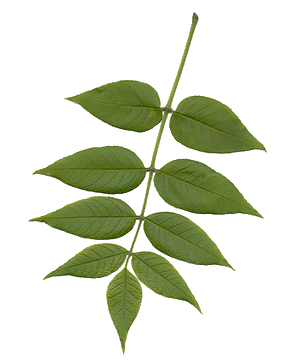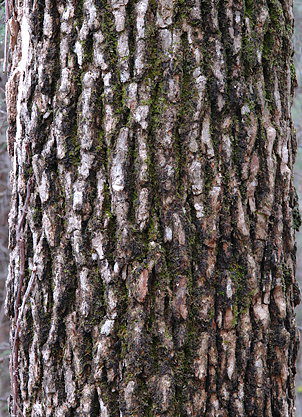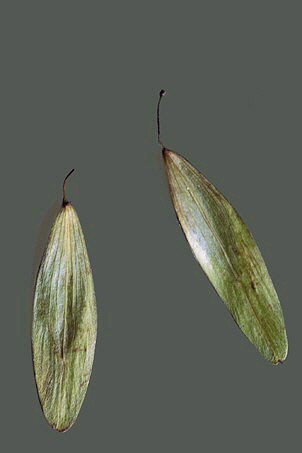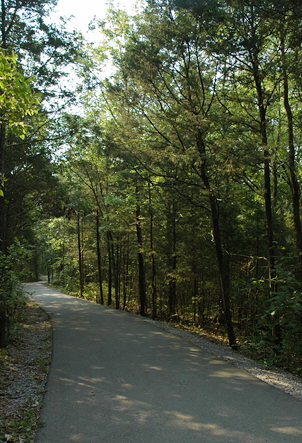| |
|
| |
 |
| |
Blue Ash Leaf |
Identification:
The leaves are pinnately
compound, smooth above and paler and hairy
below. The 7 to 11 leaflets are 3 inches
to 5 inches long and stalked. The
leaflet
margins are
serrate. The leaves are 8
inches to 12 inches in length. Compare these leaves to those
of the White Ash. Note the opposite branching pattern of this
tree.
| |
|
 |
|
|
Blue Ash Bark |
The bark of the Blue Ash is bluish
gray to brown-gray, and is thick-furrowed with interlacing ridges.
As the tree ages the bark becomes scaly, then shaggy.
The twigs of the Blue Ash are
very distinctive in that the young twigs are
square in
cross-section. Compare the twigs with those of the White Ash,
which are round in cross section. The twigs are stout, light
green to gray, either smooth or slightly hairy.
Leaf scars are
notched at the bud.
| |
|
| |
 |
| |
Blue Ash Samaras |
Look for
the Blue Ash samaras on the trail in the vicinity of Station Eight.
Note the difference in shape between the samaras of the Blue Ash and
the Samaras of the White Ash. The wing of the samara
completely encloses the seed in the Blue Ash.
Other Uses
and Lore:
The Blue Ash takes
its common name from the fact that twigs or inner bark immersed in
water will turn water blue. In fact the pioneers used the twigs and
bark to make a blue dye. The species name, quadrangulata,
refers to the four-sided twigs (see image on previous page). The
wood is heavier than white ash, and is very strong and
course-grained. It is used for rough construction, fence posts, and
for handles for spades, shovels and similar tools. It is a common
lumber for cabinetry and furniture.
A variety of
wildlife eat the seeds, including eastern gray squirrel, eastern
cottontail and white-tail deer.
The
Trail From Station Eight to Station Nine
 |
| Eastern
Redcedar Thicket |
The trail gets
less steep after Station Eight, and the limestone outcrops gradually
disappear as you get closer to river. The trail goes through
several Eastern Redcedar thickets. These thickets provide
shelter many species of animals, and owls in particular favor them
as roosting sites. Station Nine will be on the right side of
the trail.
|

